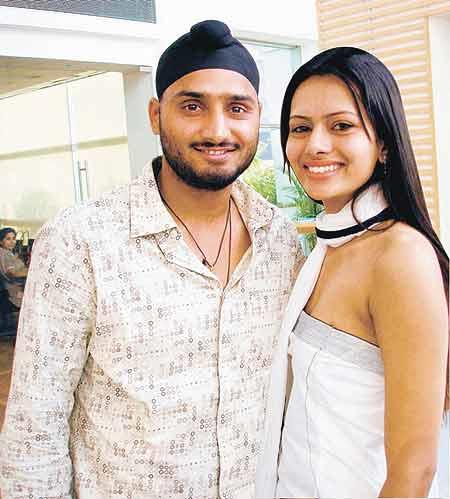Cricket Times They Are A-Changin’
March 12, 2015 Leave a comment
Cricket, the game of glorious uncertainties. World Cup, the biggest stage the game has to offer. And how the stage has changed!
 In 1983, Kapil Dev played one of the most breath-taking innings (apparently) to help steer India out of tight corner. At 18/5, Kapil and Kirmani carefully constructed a partnership to take India to a winning total. Against the perpetual minnows – Zimbabwe. Kapil, that day, scored 175 not out. Out of a total of 166. Kirmani scored 22. Unfortunately for the world, there are no tapes or archives of that day because of a BBC strike. No one was recording it on a TiVo or HD+ or their high def cell phones. India went on to win the World Cup in 1983.
In 1983, Kapil Dev played one of the most breath-taking innings (apparently) to help steer India out of tight corner. At 18/5, Kapil and Kirmani carefully constructed a partnership to take India to a winning total. Against the perpetual minnows – Zimbabwe. Kapil, that day, scored 175 not out. Out of a total of 166. Kirmani scored 22. Unfortunately for the world, there are no tapes or archives of that day because of a BBC strike. No one was recording it on a TiVo or HD+ or their high def cell phones. India went on to win the World Cup in 1983.
 For 28 years, Indian cricket fan reminisced about the 1983 Prudential Cup win, the catch that Kapil took to dismiss Viv Richards, the greatest ODI cricketer of all times, the 175 not out, the military medium of Madan Lal, Mohinder Amarnath, Roger Binny, and the guile of Bedi, that spell of Sandhu, and many such things. In 1983, many Indian families bought the black and white TV sets from companies like Salora, Uptron, Beltron. Many of those companies do not compete in the television market, or any market for that matter, any more. Some of those TV sets came with wooden cabinets that people would close to protect them from dust and unwanted access. The channels had to be changed by twisting a hard knob that made the sound of cricket ball hitting the bat (almost). And the memories are distinctly black and white – a beaming Kapil Dev wearing an Indian Cricket Team jacket/ sports-coat (logo on the breast pocket) holding that cup at the Lords’ balcony – etched on an Indian cricket lovers’ mind for almost three decades.
For 28 years, Indian cricket fan reminisced about the 1983 Prudential Cup win, the catch that Kapil took to dismiss Viv Richards, the greatest ODI cricketer of all times, the 175 not out, the military medium of Madan Lal, Mohinder Amarnath, Roger Binny, and the guile of Bedi, that spell of Sandhu, and many such things. In 1983, many Indian families bought the black and white TV sets from companies like Salora, Uptron, Beltron. Many of those companies do not compete in the television market, or any market for that matter, any more. Some of those TV sets came with wooden cabinets that people would close to protect them from dust and unwanted access. The channels had to be changed by twisting a hard knob that made the sound of cricket ball hitting the bat (almost). And the memories are distinctly black and white – a beaming Kapil Dev wearing an Indian Cricket Team jacket/ sports-coat (logo on the breast pocket) holding that cup at the Lords’ balcony – etched on an Indian cricket lovers’ mind for almost three decades.
Back then, they sold post-cards. In the absence of desktop wallpapers or Facebook walls, people collected bingo cards and post-cards of players. K Srikanth hitting a lofted square cut, Sunny Gavaskar smiling in a close up, Ravi Shastri in that blue and yellow jersey with a white helmet at the Benson & Hedges series down under, Kapil Dev’s signature bowling pose. There was Big Fun, a chewing gum company, which must have made a fortune by somehow convincing a generation of cricket watchers to collect bingo cards of cricket and football players.
In the coming three decades, we tried hard to repeat that feat. In 1987, the first world cup outside England, in India, we lost the semi-finals of Reliance World Cup. Shortly thereafter, we pinned our hopes on a short fellow named Tendulkar. 1992 wasn’t ours (we won 2 of 8 matches). 1996 took us to the semi-finals again, where a Sri Lankan demon (the first one after Ravana) took us apart. Tendulkar fought back valiantly, but once he left the golden rectangle (like Jataayu), even the pitch turned on us. In 1999 (horrible super six performance), 2003 (a Bazooka Ponting vs Zaheer Satkela in Final), 2007 (knocked out in round robin with one win against Bermuda!), we hit a here and there, a reasonable high and an embarrassing low.
During this time, the whites were replaced by colourful dresses and multiple brand endorsements. And the black and whites were replaced by color TVs. The CTVs were replaced by a myriad of varieties – Plasma, LCD, LTV, Flat screen, curved LED, 3D, Smart TV. Internet streaming is the new thing. The broadcasting evolved. From 1-3-5 cameras per match, suddenly, there are more than 20-30 cameras per game. There are cranes and javelins and quadcopters. There are moving boundary cameras. There is stump-vision. Oh, how I loved the Sky-network’s boundary camera vision which moved from right to left as the bowlers ran in to bowl!
By 2015, the few commentators that used to be have given way to an army of commentators. Sometimes, the line up of commentators is like a team that could take on any of the current world-cup contenders with aplomb, despite their age. The time spent on technicalities by ex-greats have made a successful commentator out of Ravi Shastri (for the sheer variety he introduces in the commentary box with phrases like ‘tracer bullets’) and Harsha Bhogle (the common man’s commentator).
From two umpires, we moved to three. From three, we have moved to 3+ technology. We have seen Hawk-eye, spin vision, snicko meters, hot-spots, stump mics that record sound, and multiple cameras whose job is to just watch your bat and the crease. We have learnt all about “it’s the on field umpire’s call”. We have learnt about marginal errors. And we have noted with great relief that Steve Bucknor’s faulty version could be replaced by an android. Finally!
The equipments evolved too. From the culture of heavy bats for heavy ground strokes, we moved to long handles, light bats, custom bats, curved edges, heavy bottoms. Somewhere, we learnt about Tennis elbow too. Leather balls became white. No longer a shining red cherry, yeah? And now, one ball has given way to two. To be used from different ends of the stadium. The softer kookaburras to the harder SGs, the realization that SG was Sanspareills Greenlands, and not Sunil Gavaskar, also became all pervasive. Thigh pads and helmets became lighter and sturdier. The LED lights of stumps and bales – who’d have thought! Reviewing umpire decisions rather than getting fined for showing dissent is almost as strong a deviation from the gentlemen’s game as an Indian bowler clocking speeds of 145+ consistently. Umesh Yadav – you have my vote for now!
The discussions evolved. From quoting shots and moments, the cricket debaters have started quoting statistics – averages, home and away records, fastest 100s, strike rates, no of dots in a double century, game impact index. The visualizations now show multi-coloured lines to show the singles and the boundaries and the wickets. There is an accurate capturing of short and good length deliveries. There are dossiers that players carry on their iPad. About their competition. Joel Garner probably believed in small things. Like bowling at fiery pace and making the bowl land in the right areas. And playing mind games. Most teams in the last world cup were probably spending 6 hours discussing how to get Sachin Tendulkar or Virendar Sehwag out by reviewing various batting tapes.
And then 2011 happened. Yuvraj happened. Sachin happened. Mahendra Singh Dhoni happened. The bowlers  showed up. The fielders did. And Wankhede erupted. And a new memory got etched in the new generation’s sub-conscious – that glorious six to win the world cup, Mahindra Singh Dhoni holding the pose after hitting that six and then completing a gladiatorial 360-degree swing of the bat, a team carrying Sachin Tendulkar around the ground, and sending the cup to the background. The color across the stadium – Blue. And yes, the tricolor. And Sunil Gavaskar making the remark – “when I die, the last thing I want to see is the six that Dhoni hit in the 2011 world cup final”. Now when I think of winning the world cup, my memories are not Black and White. They are, 32-bit-high-definition-high-resolution-high blah blah, full of colors. Oh, how the game has changed!
showed up. The fielders did. And Wankhede erupted. And a new memory got etched in the new generation’s sub-conscious – that glorious six to win the world cup, Mahindra Singh Dhoni holding the pose after hitting that six and then completing a gladiatorial 360-degree swing of the bat, a team carrying Sachin Tendulkar around the ground, and sending the cup to the background. The color across the stadium – Blue. And yes, the tricolor. And Sunil Gavaskar making the remark – “when I die, the last thing I want to see is the six that Dhoni hit in the 2011 world cup final”. Now when I think of winning the world cup, my memories are not Black and White. They are, 32-bit-high-definition-high-resolution-high blah blah, full of colors. Oh, how the game has changed!
There is a small thing that hasn’t changed. Commentary on radio used to be a visual narration filled with excitement. It could not depend on visual aids or the colors. It has stayed Black and White.
“Amarnath is bowling from the pavilion end to right arm batsman Ian Botham.
Bowl thoda andar ki taraf aayee aur ballebaaz ne kalai ko ghumate hue square leg ki taraf bhej diya hai. Umpire chusti se hatTe hue. Bahut hi aakarshak stroke tha Narottam (Puri), aur bahut hi khoobsurti se is se pehle ki fielder Bishan Bedi gend tak pahunche, Botham ne ek run poora kar liya hai. Bahut hi sadhaa hua shot tha aur aise shots se hi aapko pata chalta hai ki Botham jitney ache gendbaaj hain, utne hi ache ballebaaj bhi.”
“Agli gend karne ko gendbaaz mohammad shami pavilion end se hawa ke virudh daudte hue, aur off stump se thoda bahar tappa kha ke, halke se bahar ki taraf gayee aur ye jordaar appeal. Aur ye umpire in Ian Bell ko out karaar diya. Mahindra Singh Dhoni ka ye is match mein teesra catch, aur Shami ka pehla wicket.
Absolutely Shekhar. This was a beautiful outswinger. You could say that it did not swing much. It just held its line and from the wide angle of the crease from where Shami bowled it, that was good enough to flummox a well set batsman like Ian Bell. Kudos to Shami for having persisted with that line and invite Ian Bell to play that shot. Bell played inside the line and was beaten all hands up. With that we will take a short advertisement break and we will back shortly to celebrate this wicket.”
Oh! Sorry. There’s one thing that has really changed about radio commentary – There are no boundaries hit on air anymore. They are “shandaar BSNL chauka. Connecting India.”
<This post is my entry for the Blogmint – Harsha – Blogger Dream Team Contest>
![]()






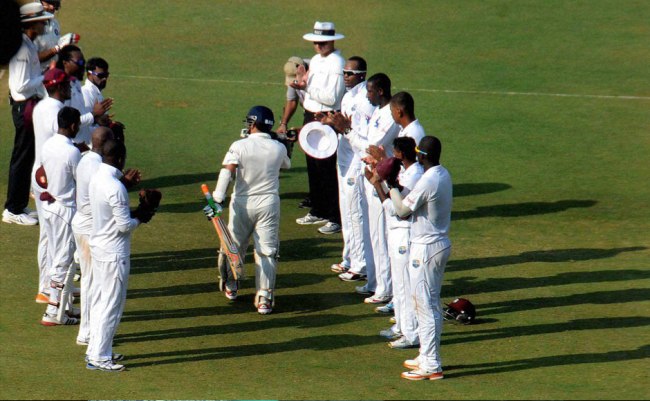
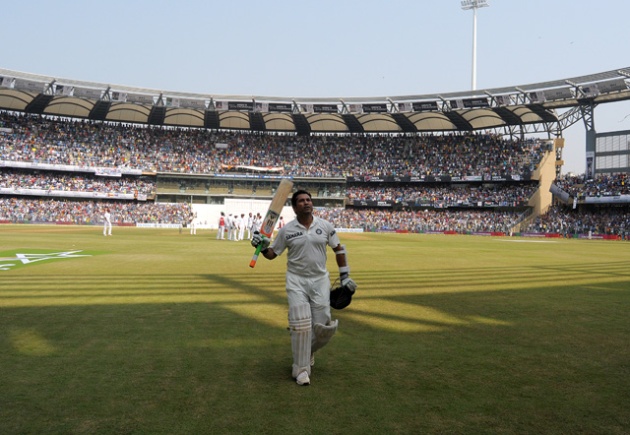
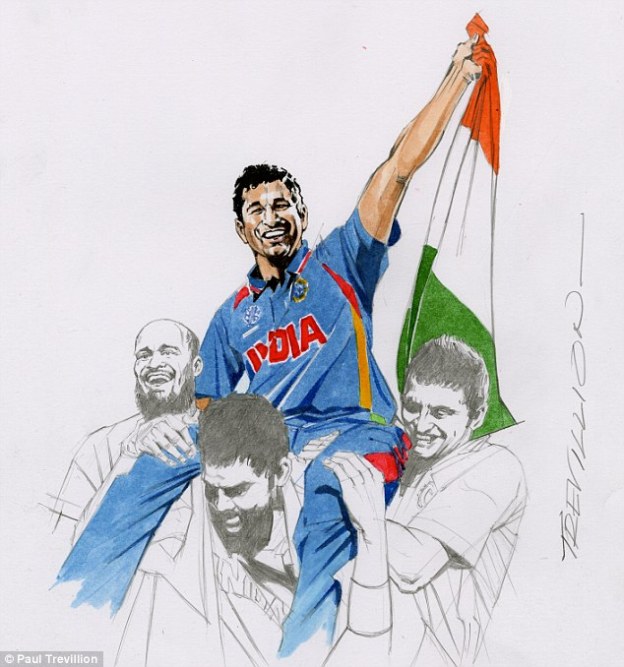
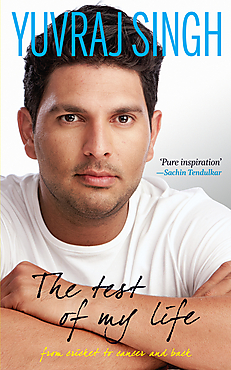
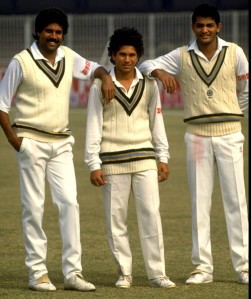
 And the players wore those white V-neck sweaters in winters. The ones which had a combination color rim around the neck. The colors representing your country colors. Indians had blue. Aussies had yellow and baggy green. Me and my brother had pleaded with mom to get her to knit one of those sweaters for us. And she did. And we wore them, and felt let like the real deal. Nothing could go wrong after that. Yet it did. You did gt thwacked around the park. Or bowled out for a duck. But that could happen to Kapil. OR Kris Srikant as well. It’s just that you felt that you were giving your 100%.
And the players wore those white V-neck sweaters in winters. The ones which had a combination color rim around the neck. The colors representing your country colors. Indians had blue. Aussies had yellow and baggy green. Me and my brother had pleaded with mom to get her to knit one of those sweaters for us. And she did. And we wore them, and felt let like the real deal. Nothing could go wrong after that. Yet it did. You did gt thwacked around the park. Or bowled out for a duck. But that could happen to Kapil. OR Kris Srikant as well. It’s just that you felt that you were giving your 100%.

